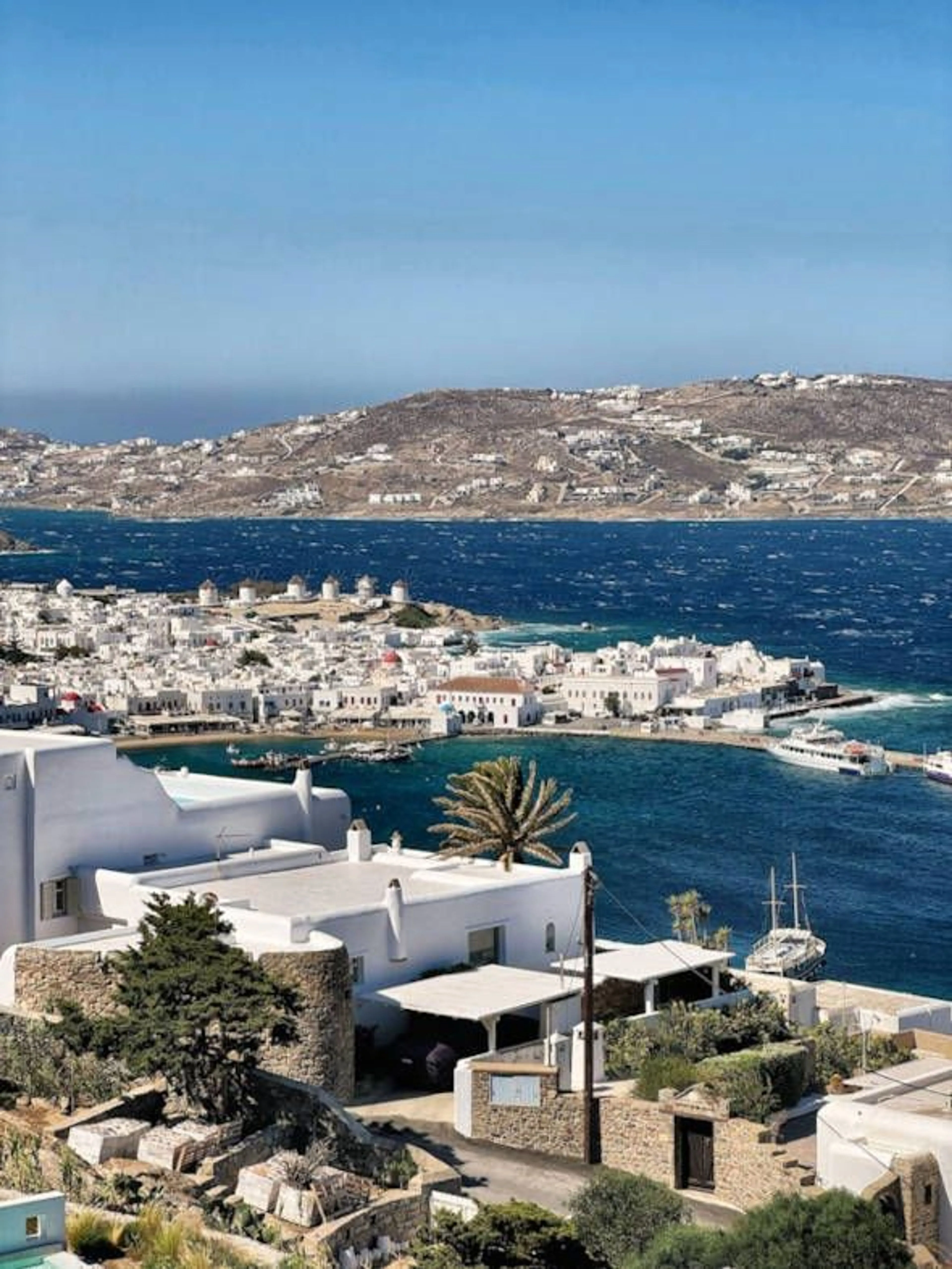Mykonos Mini Guide: Beaches, Restaurants, Clubs, and Places of Interest
According to an ancient myth, the rocks scattered throughout the arid landscape of Mykonos are the solidified remains of the giants killed by Heracles. Despite its desert appearance, Mykonos became one of the most famous (and expensive) of the Aegean islands.
Tourists from all over the world flock to it, attracted by its sandy beaches and the bars and restaurants that crowd the port, also called Mykonos. The whitewashed streets of this island, the cubic houses, and the churches with their blue or light blue touch of the doors or domes constitute the stereotype of classic Cycladic architecture.
At Greca Travel, you can find Mykonos travel packages at the best price and modify them to suit you! Take a look at our complete guide to Mykonos.
Mykonos fame lies on its beaches, as it is not particularly a green island. The best of them are on the south coast of the island. Platys Gialos, 3.5 km south of the city, is the quintessential family beach, with water sports and a long stretch of sand. Those who want to get a full tan can head to the famous nude beaches. The first is Paraga, or Agía Anna, a quiet corner with a good tavern. The next is Paradise, with camping, disc,o and water sports. Elia, also a nudist beach, fills up in high season.

Things to Do in Mykonos
For its part, Mykonos is also noted for nightlife and the island houses several of the best bars, clubs, and discos in Greece around its coast. These are Cavo Paradiso, Jackie O, Babylon, Astra, Scorpios, Kalua Beach Bar, Pasaji, SantAnna, Katerina’and s, and Galleraki, among others.
Those with limited time may need to start their tour of Mykonos with a quick visit to the ArchaeolMuseum museum, to immerse a little into the intriguing history of the sanctuary. The museum houses Delian funerary sculptures discovered on the neighboring islet of Renia, many with mourning scenes. Mykonos' most significant work is a pithos (canning jar) from the 7th century BC, which represents the Greeks emerging from the Trojan horse.
From the museum, turn right onto Polykandrioti and you will reach the central part of the port. There, the best time is sunset, when the islanders stroll along the boardwalk to meet friends and go to its many cafes. The bust of Mando Mavroyennis, the heroine of the island, stands on a pedestal in the Plaza Mayor.
Along the pier, you can see Petros II, the Pelican, the local mascot, gleaming with its beak. In the 1950s a flock of migratory pelicans passed through Mykonos and one of the birds, exhausted, stayed behind. The fisherman Vassilis nursed him until he regained strength.
This was the original Petros. And the current Petros, probably, is some descendant who likes to be the center of all eyes and perpetuate tradition.
Perpendicular to the pier is Matogianni Street, the main commercial artery, where jewelers, boutiques, cafes, and pastry shops follow one another. A stop along the way: Try the island's traditional almond cookies. Although this specialty is offered by almost all patisseries, the best ones are found in Skarapoulos (on MatoStreet Street); Nikolaos Skarapoulos started the family business in 1921.
At the end of this street, if you turn right towards Enoplon Dynameon, you will soon see the charming Aegean Maritime Museum. Also, if you continue west on this same street, turning Mitropoleos Georgouli continue a few blocks towards the port. Many of the early ship captains built beautiful houses with wooden balconies right here on the seafront. Little Venice is the name given today to this neighborhood located in the extreme southwest of the port. A few of these distinguished houses have been converted into elegant bars where a romantic atmosphere reigns at twilight.
In the distance, on the other side of the waters, lined up like lead soldiers on the high hill, the famous windmills of Mykonos are outlined, an echo of a time when the energy of the wind was used to grind the grain of the island.
According to the locals, the most famous of the many churches that inhabit Mykonos is the Paraportiani (outside the walls), which is on Ayion Anargyron Street, near the FoMuseum museum.
In contrast, in the inland town of Ano Mera, 7.5 km to the east, islanders live oblivious of tourism. Its main attraction is Panagia i Tourlani, from the 16th century, dedicated to the protector of the island. Founded by two monks from Paros, the monastery, with its red dome, was restored in 1767. The ornate marble tower was sculpted by artisans from Tinos. Inside there are beautiful 16th-century icons, chasub, less, and embroidery. To the northwest of the town stands the Palaiokastro hill, once crowned by a Venetian castle, which was believed to be the site of one of the ancient cities of Mykonos, but what you see today is Moni Palaiokastrou, from the 17th century. To the northwest, in the pretty village of Marathi, is Moni Agiou Panteleimona, founded in 1665; from here, the road continues to the bay of Panormos and Ftelia, a paradise for windsurfers.
Visit Mykonos
As you can see, Mykonos is a wonderful destination to discover. At Greca Travel, you can find Mykonos travel packages at the best price and modify them to suit you!